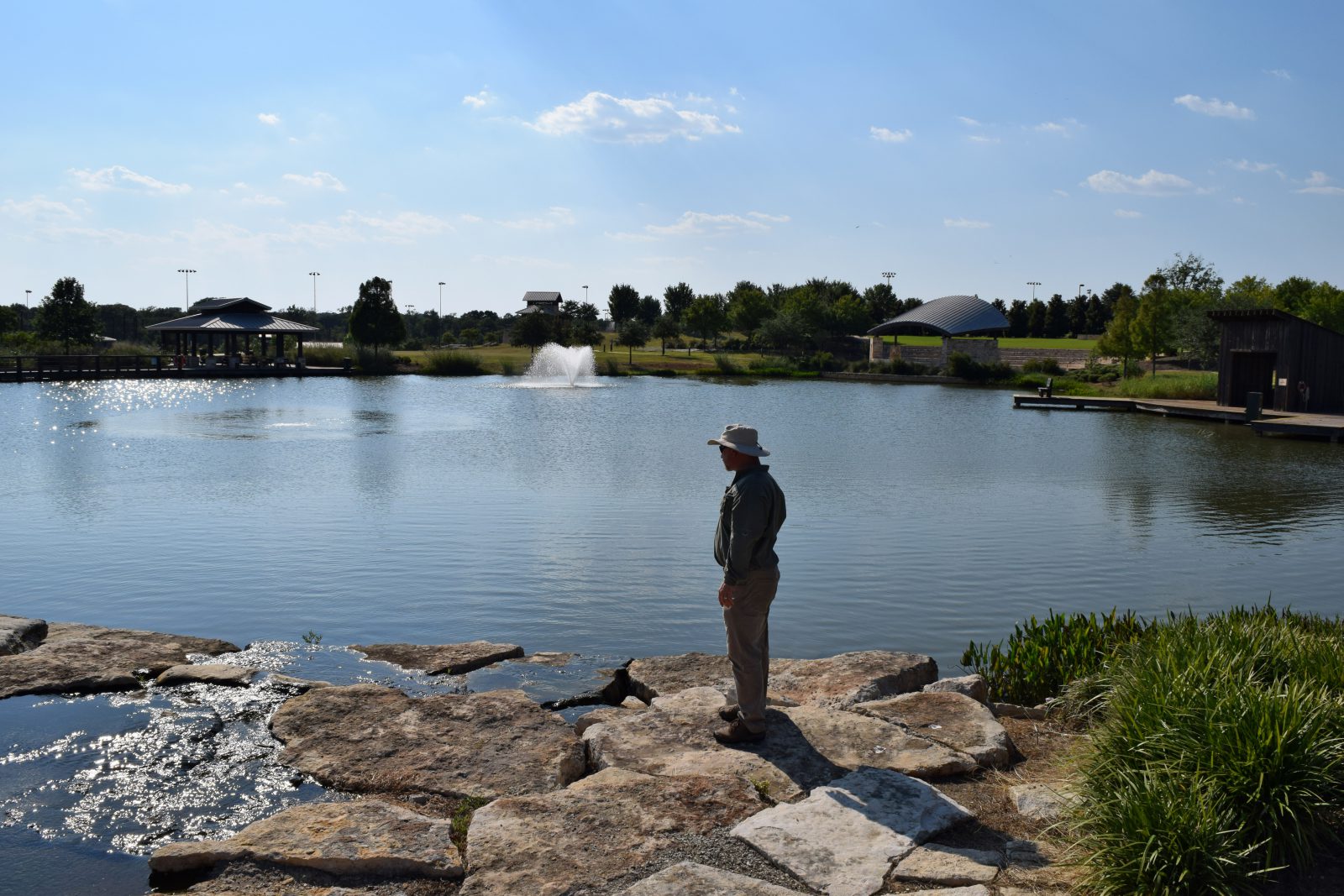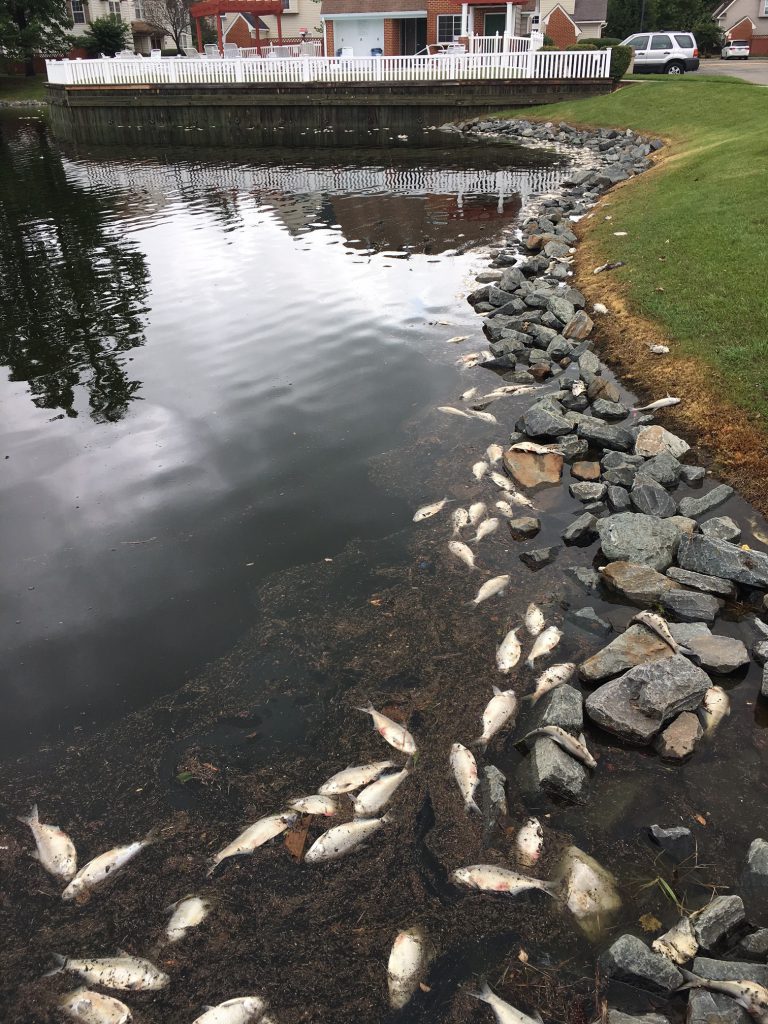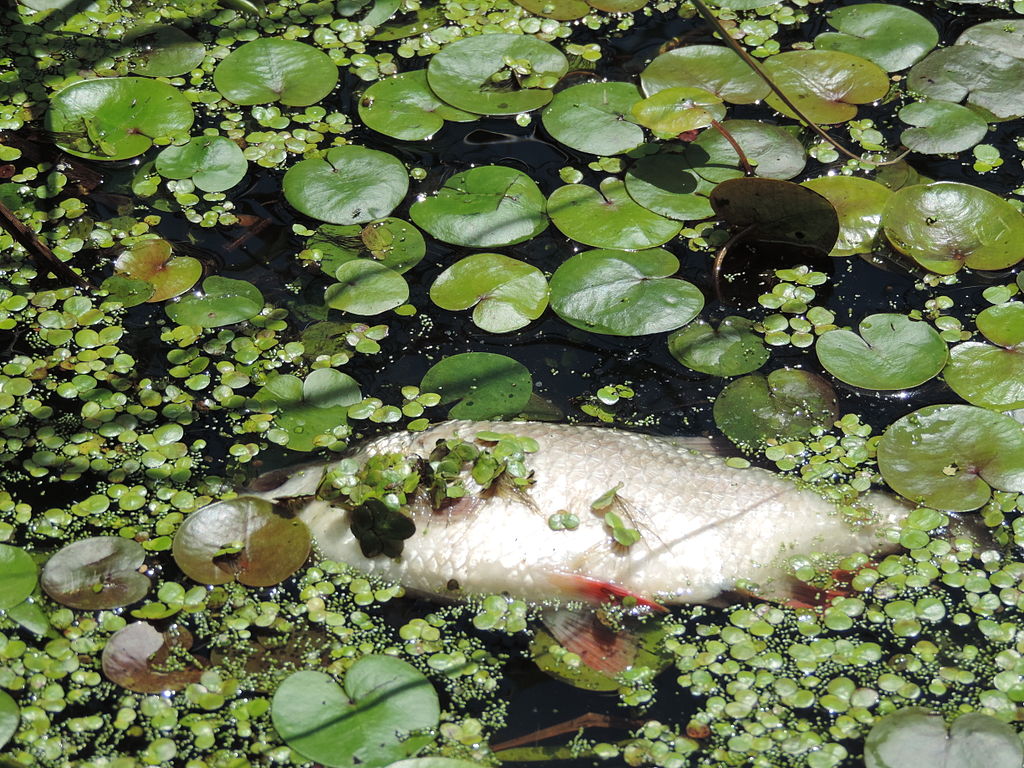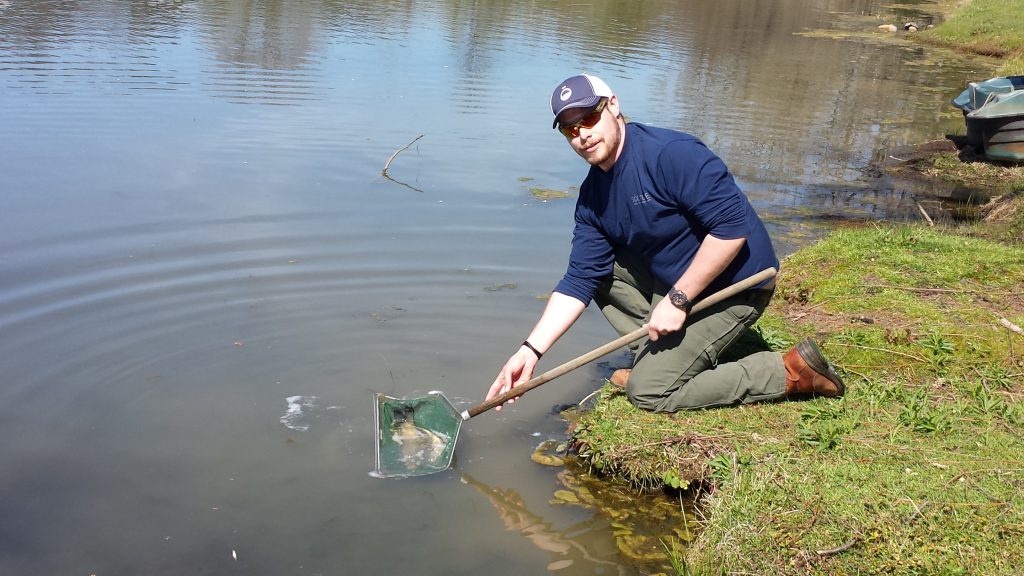
How to Avoid Fish Kills During Scorching Summer Temperatures
Many of us love the long sunny days and warm weather that summer brings, but hot temperatures can put a strain on aquatic environments and push fish to their limits. As temperatures increase, so does the possibility of a fish kill. When a fish kill is discovered, it’s common for waterbody owners, managers and communities to fear the worst – from chemical spills to foul play. However, most fish kills are often a natural occurrence. While nature is usually to blame, actions can be taken to improve the summer conditions of their waterbodies.

What Causes Fish Kills?
Like humans and animals, fish require oxygen in the form of dissolved oxygen (DO) to survive. However, DO can fluctuate by season, weather or even time of day. The dissolved oxygen requirement in lakes and ponds is highest in the summer when water temperatures reach into the 80’s and 90’s. During these warm temperatures, the water’s ability to hold oxygen is at its lowest. These two factors can reduce the stability of a waterbody, creating the conditions that can lead to fish kills.
Many fish kills occur after several days of cloudy weather, early in the morning, or after heavy rain events. This is because when sunlight is not present, plants also use oxygen (respire), leaving less in the water available for fish. When a lake or pond’s water quality becomes unbalanced, just a small change can be enough to stress fish.
Additionally, large rain events can also rapidly circulate the water in a lake or pond, causing changes in the position of oxygen rich water in a short period of time. This quick ‘turnover’ of the water can quickly decrease the amount of oxygen available to fish, essentially causing them to suffocate.

How to Reduce the Chances of Fish Kills
Keep a close eye on your waterbody to determine if fish are stressed or susceptible to a kill. When oxygen levels are low, the fish in the pond will hang out near the water’s surface. The fish may be very skittish and appear stressed. A noticeable sign of this is when dozens of fish get startled as you approach your pond. If you notice these signs and contact your fisheries management professional early on, it may be possible to reduce the severity of a fish kill and prevent future kills using quick and corrective action:
- Introduce aeration
Once DO levels reach a lethal range, it may take several days to kill the entire fish population. This gives lake and pond owners a chance to circulate the water with floating fountains and increase DO with bottom diffused aerators, nanobubble technology, or oxygen saturation technology. The increased DO can rapidly help restore balance to the aquatic environment. - Manage algae and vegetation growth
When nuisance aquatic plants like duckweed, watermeal, and hydrilla are left unmanaged, they may form dense blooms or mats on the surface of a lake or pond, blocking sunlight, impeding water circulation, and depriving native species and fish of necessary oxygen. Physically removing these plants can help free up the water column. Likewise, nutrient management tools like biological augmentation and phosphorous-locking technologies like Phoslock and Biochar can help eliminate excessive nutrients in the waterbody that are known to promote undesirable growth. - Establish a beneficial buffer
The addition of a beneficial vegetative buffer is another way to reduce the likelihood of a fish kill through nutrient reduction. Installing a buffer of beneficial plants along the shoreline will help filter runoff and keep unwanted nutrients in the form of fertilizer, trash, pet waste, and grass clippings from entering your lake or pond. Buffers also prevent nuisance wildlife and geese from entering the waterbody. Keeping aquatic vegetation and algae within acceptable densities by limiting nutrient sources and the resulting runoff is an essential step to help prevent future fish kills. - Test water quality
Lake and pond owners often wait until after a fish kill occurs to conduct water quality tests, but a proactive water quality testing program can help identify water quality impairments, like dissolved oxygen, pH, and nutrient levels, before they get out of hand and ensure the most effective management methods are being utilized to protect the waterbody.

Protect Your Waterbody With an Integrated Management Plan
Mother Nature sometimes throws curveballs. Large thunderstorms and natural disasters may create stressful conditions that we can’t always foresee, and sometimes a fish kill is inevitable. However, knowledge and diligence can help prevent this from happening as often and help your pond bounce back if one has occurred.
Consider consulting with your fisheries management professional to implement preventive strategies. A professional can help you develop an Integrated Management Plan designed with this threat in mind. They can also recommend the most suitable types of aeration systems, buffer plants, fish species selection, and management tools to revitalize your waterbody.
SOLitude Lake Management is a nationwide environmental firm committed to providing sustainable solutions that improve water quality, enhance beauty, preserve natural resources and reduce our environmental footprint. SOLitude’s team of aquatic resource management professionals specializes in the development and execution of customized lake, pond, wetland and fisheries management programs that include water quality testing and restoration, nutrient remediation, algae and aquatic weed control, installation and maintenance of fountains and aeration systems, bathymetry, mechanical harvesting and hydro-raking, lake vegetation studies, biological assessments, habitat evaluations, and invasive species management. Services and educational resources are available to clients nationwide, including homeowners associations, multi-family and apartment communities, golf courses, commercial developments, ranches, private landowners, reservoirs, recreational and public lakes, municipalities, drinking water authorities, parks, and state and federal agencies. SOLitude Lake Management is a proud member of the Rentokil Steritech family of companies in North America.









